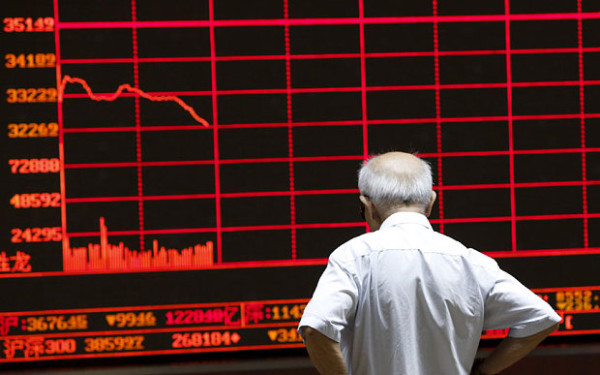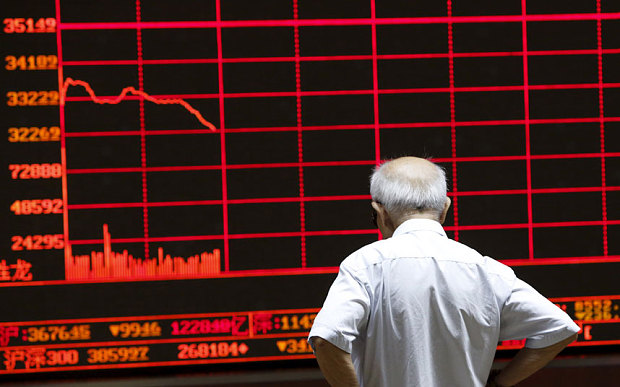
Already, there are warning signs of a slowdown, similar to those that front-ran the 1929 crash Photo: Reuters
Source: The Telegraph
By: Jeremy Warner
While all Western eyes remain firmly focused on Greece, a potentially much more significant financial crisis is developing on the other side of world. In some quarters, it’s already being called China’s 1929 – the year of the most infamous stock market crash in history and the start of the economic catastrophe of the Great Depression.
In any normal summer, a 30pc fall in the Chinese stock market – a loss of value roughly equivalent to the UK’s entire economic output last year – after an ascent which had seen share prices more than double within the space of a year would have been front page news across the globe.
The dramatic series of government interventions to stem the panic – hitherto unsuccessful, it should be added – would similarly have been up there at the top of the news agenda. Yet the pantomime of the Greek debt talks, together with the tragi-comedy of will they, won’t they leave the euro, has relegated the story to little more than a footnote – even though 940 companies, more than a third, have now suspended trading on China’s two main indices.
The parallels with 1929 are, on the face of it, uncanny. After more than a decade of frantic growth, extraordinary wealth creation and excess, both economies – America in 1929 and China today – are at roughly similar stages of economic development. Both these booms, moreover, are in part explained by extremely rapid credit growth. Indeed, China’s credit boom dwarfs that of even the “roaring Twenties”. Borrowed money, or margin investing, played a major role in both these outbreaks of speculative excess.
True, the Chinese stock market bubble is only a one-year wonder, whereas the build-up to the Wall Street Crash of 1929 was more sustained. Even so, the comparison still holds. As noted by JK Galbraith in his classic account, The Great Crash 1929, even as late as 1927 it was possible to argue that American stocks represented fair value. It was only in the final year that the “escape into make-believe” happened in earnest, when the stock market rose by nearly 50pc. This applies to the Shanghai Composite, too. Stripping out the lowly-rated banking sector, valuations for just about everything else have rocketed, making those that ruled on Wall Street in the run-up to October 24, 1929, look relatively modest. Nor do the similarities end there. As in 1920s America, China’s stock market boom has ridden in tandem with an equally speculative real estate bubble.
The macro-economic backdrop is also surprisingly similar. Then, as now in China, rural workers had emigrated to the cities in vast numbers in the hope of finding a more prosperous life in fast-growing industrial sectors. In 1920s America, virtually all these sectors – from steel to automobiles and the new technologies of radio and consumer durables – grew like Topsy, inspiring households to invest in them and chase the apparently bountiful profits they were generating. A similar explosion in industrial activity has taken place in China, only more so. China has packed more development into a few short decades than any country in recorded history before, creating a worldwide glut in industrial capacity that even global demand, let alone domestic Chinese demand, is struggling to accommodate.











Sign up on lukeunfiltered.com or to check out our store on thebestpoliticalshirts.com.